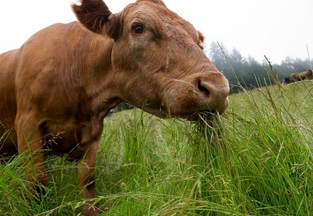 Administrative Science Quarterly is a research journal that for the last few years has published roughly 20 articles per year, which is slightly more than what some other journals will publish in 1.5 months. ASQ is very selective, yet we have found a way to be even more selective by also recognizing excellence in the articles we publish. Every year an award is given to one article for its scholarly contribution over the previous 5 years. These articles are available here, and I will give one example in this blog. It is about grass-fed beef. Those who are into gourmet or health food dining will recognize grass-fed beef as specially produced to the cleanest, most environmental, and most original standards, and as being a premium product that can be obtained in the best restaurants and stores. They are unlikely to know that grass-fed beef used to be sold at a discount because it lacked the fat marbling and tenderness of beef from cattle produced the standard way, with a finishing period where the cattle were eating corn and grain in feedlots. How did the discounted product of the past become today’s premium product? The answer is given in an ASQ article by Klaus Weber, Kathryn Heinze, and Michaela DeSouzey. It involves a social movement that helped drive forward activists and entrepreneurs who coalesced around the ideas of authenticity in farming, sustainable nature management, and using only natural materials and processes. All of these principles were in opposition to normal farming methods, which the activists saw as industrial, non-sustainable, and relying on artificial materials and approaches. These activists were a social movement, but they did not have a company, a set of customers, a way to market what was special about grass-fed beef, or even a clear way to earn a living. Instead, they produced a language, a social grouping, and a belief system that a set of entrepreneurs could organize around. The next steps were creation of the new market for the now-premium product of grass-fed beef. Farms switched to grass-fed methods, often helped by other farms or by publications devoted to these methods. The entrepreneurs and other parts of the industry, including the social movement, created informal standards for how to conduct grass-fed farming. They sought out customers for the growing set of producers and volume of (now-premium) beef. Throughout this process, a social movement organized around ideas of protecting nature, preventing cruelty to animals, and promoting human health rallied resources in ways that created a new niche of an industry, and an opportunity for entrepreneurs. The key insight from this research is the sequence of events: entrepreneurs with new ideas and products can in principle build markets through individual efforts, but it is difficult to accomplish. Once a social movement has made a cultural foundation, entrepreneurial effort is much easier, so it is accelerated and more likely to succeed. The sequence leading to the grass-fed beef you may be eating soon started with an idea and a language to use in making it a reality. Weber, Klaus, Kathryn L. Heinze, and Michaela DeSoucey. 2008. "Forage for Thought: Mobilizing Codes in the Movement for Grass-fed Meat and Dairy Products." Administrative Science Quarterly 53(3):529-67. Comments are closed.
|
Blog's objectiveThis blog is devoted to discussions of how events in the news illustrate organizational research and can be explained by organizational theory. It is only updated when I have time to spare. Archives
May 2024
Categories |
 RSS Feed
RSS Feed